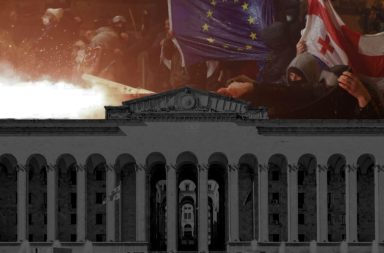Many have noticed Nikol Pashinyan and Anna Hakobyan actively sharing their lives on social media, almost like influencers or bloggers. From personal moments to official engagements, their posts are frequent and highly curated. This behavior has drawn even more attention recently, given the alarming developments next door: Azerbaijan’s President Ilham Aliyev is ramping up preparations for war, escalating rhetoric, and demanding Armenia amend its constitution as part of his so-called “peace” terms. While Aliyev appears to be carefully strategizing for his next move, Pashinyan’s focus on curating his online image seems unusual and even out of step with the urgency of the threats facing Armenia.
While there may be multiple explanations for this social media strategy, here are some thoughts to consider:
Preparing for the 2026 Elections
With their approval ratings reportedly dropping after recent events, it’s plausible that Pashinyan and Hakobyan are already gearing up for the 2026 elections. Their primary objective is likely to retain a parliamentary majority, which would ensure Pashinyan’s reappointment as Prime Minister. A strong social media presence helps keep them in the public eye as they lay the groundwork for their campaign.
Dominating the Media Narrative
Maintaining visibility is crucial for political survival. By consistently posting on social media, Pashinyan and Hakobyan are working to dominate the media space, shaping the narrative around themselves and their actions. This strategy not only boosts their relevance but also positions them as key players in the political landscape, especially as elections draw closer.
A PR-Driven Strategy
It seems likely that a professional PR consulting firm is behind their strategy. The focus on personal branding—presenting themselves as relatable and approachable public figures—aligns with modern political marketing tactics. By framing themselves as “ordinary people,” they aim to build a connection with voters on a personal level.
Humanizing Their Image
Social media gives Pashinyan and Hakobyan an opportunity to showcase their “human” side. Posting everyday moments, family activities, and personal details creates a sense of familiarity and approachability. The logic here is straightforward: the more relatable they appear, the more likely people are to trust and vote for them.
Distracting from Policy
This strategy also serves another purpose—shifting attention away from substantive policy discussions. Policies and governance decisions often spark debate and criticism. In contrast, personal content is light, entertaining, and easier for people to engage with. By centering their social media narrative on personal life, they can divert public attention from controversial or unpopular decisions.
Deflecting Meaningful Criticism
The focus on personal life also shields them from meaningful criticism. Instead of engaging in discussions about governance or policy, critics often get sidetracked by trivial matters—like what kind of coffee Pashinyan drinks or the hat he’s wearing. This tactic dilutes serious political discourse, allowing them to evade deeper scrutiny.
Defusing Sharp Criticism
When superficial criticisms arise, they can easily dismiss them. Let’s call this the “Stupid haters gonna hate” approach. By addressing minor grievances, they can deflect from more significant issues. For instance, responding to comments about their outfits or posts creates the illusion of engagement, while ignoring legitimate grievances about governance or leadership.
Performative Transparency
Their frequent posts often give the appearance of openness and accessibility. However, this “transparency” is largely performative. By sharing details of arrivals, departures, and casual moments, they create a façade of openness without providing meaningful insights into their decision-making processes. In doing so, they replace genuine transparency with a curated narrative of their public personas.
The Bigger Picture
However, this social media frenzy unfolds against a troubling backdrop. While Azerbaijan is methodically preparing for military escalations, increasing its arms purchases, and pushing for the so-called “Zangezur Corridor” to connect Azerbaijan to Turkey via Armenia, Pashinyan is increasing his visibility on social media.
As Azerbaijan readies itself for a potential new attack and Israel’s arms sales to Azerbaijan reach record highs, Pashinyan has launched a new podcast and is seen riding bikes—activities that many view as trivial in the face of national security threats.
Azerbaijan’s President, Ilham Aliyev, has reiterated his insistence on the opening of the “Zangezur Corridor,” underscoring the urgency of the situation. While Aliyev seems to be focused on achieving his objectives through calculated moves, Pashinyan appears more preoccupied with projecting an image of relatability online than addressing these escalating threats.
A Carefully Crafted Persona
In today’s media-saturated world, the line between political leadership and personal branding is increasingly blurred. Pashinyan and Hakobyan’s active social media presence may seem excessive to some, but it serves multiple underlying purposes: maintaining visibility, shaping public perception, and deflecting attention from contentious issues. Still, as Aliyev maneuvers with precision and purpose, Pashinyan’s focus on performative transparency feels oddly out of sync with the pressing realities Armenia faces.
Armenia faces existential threats that require leadership rooted in honor, responsibility, and strategic action. Instead, Pashinyan prioritizes optics over governance, crafting a public image while the country’s security deteriorates. His continued rule is not just a political issue but a national crisis. Every moment he remains in power deepens Armenia’s vulnerabilities.


